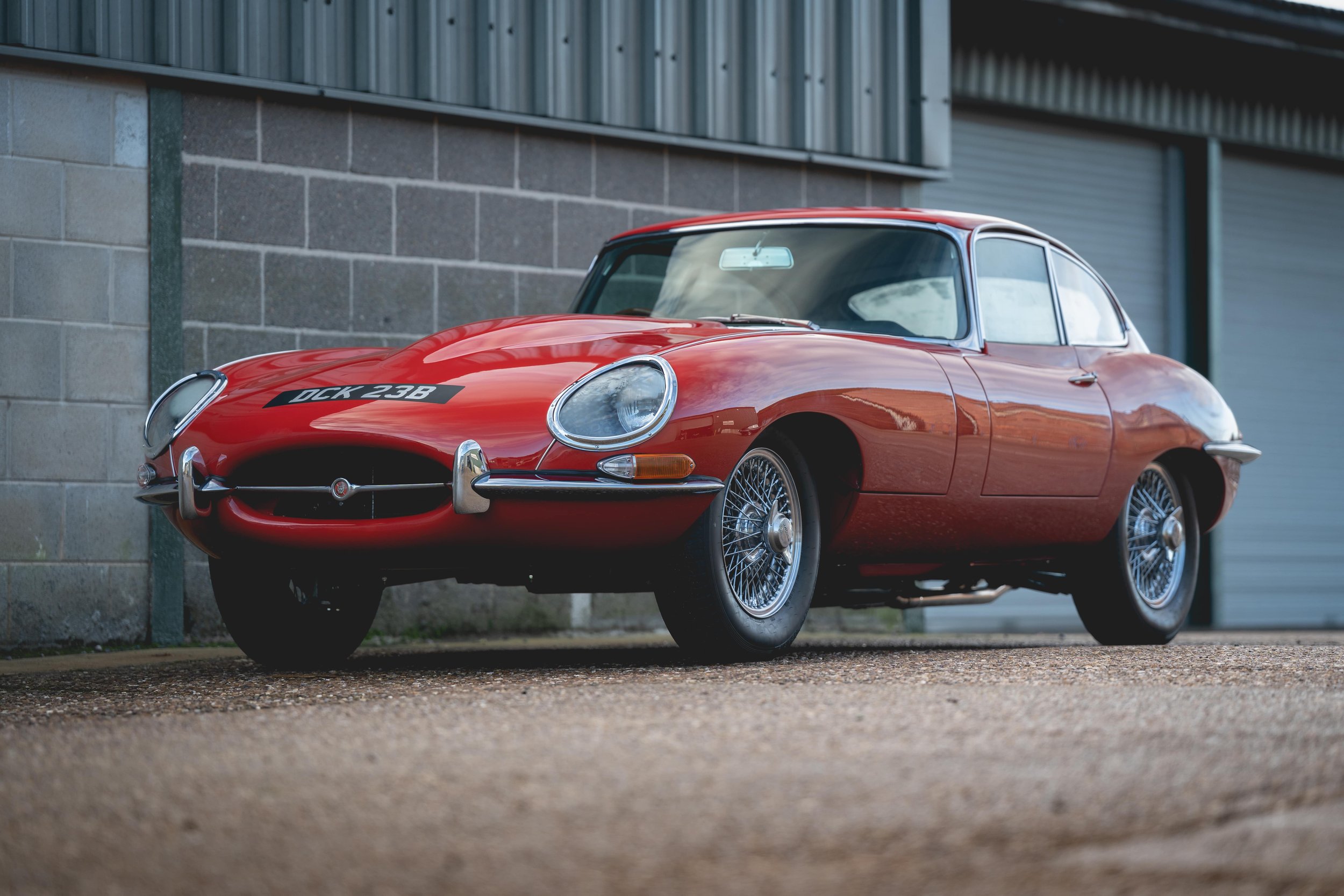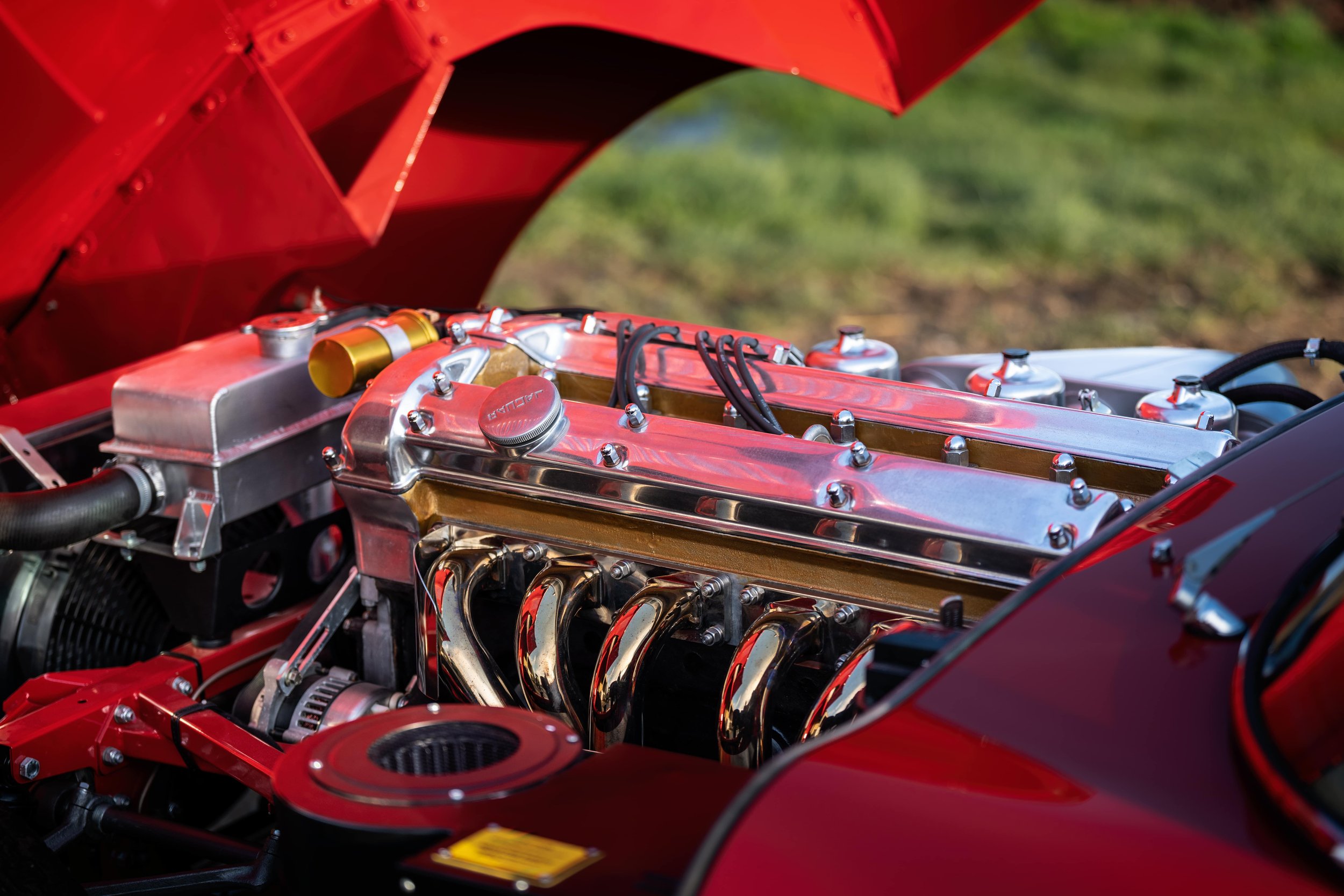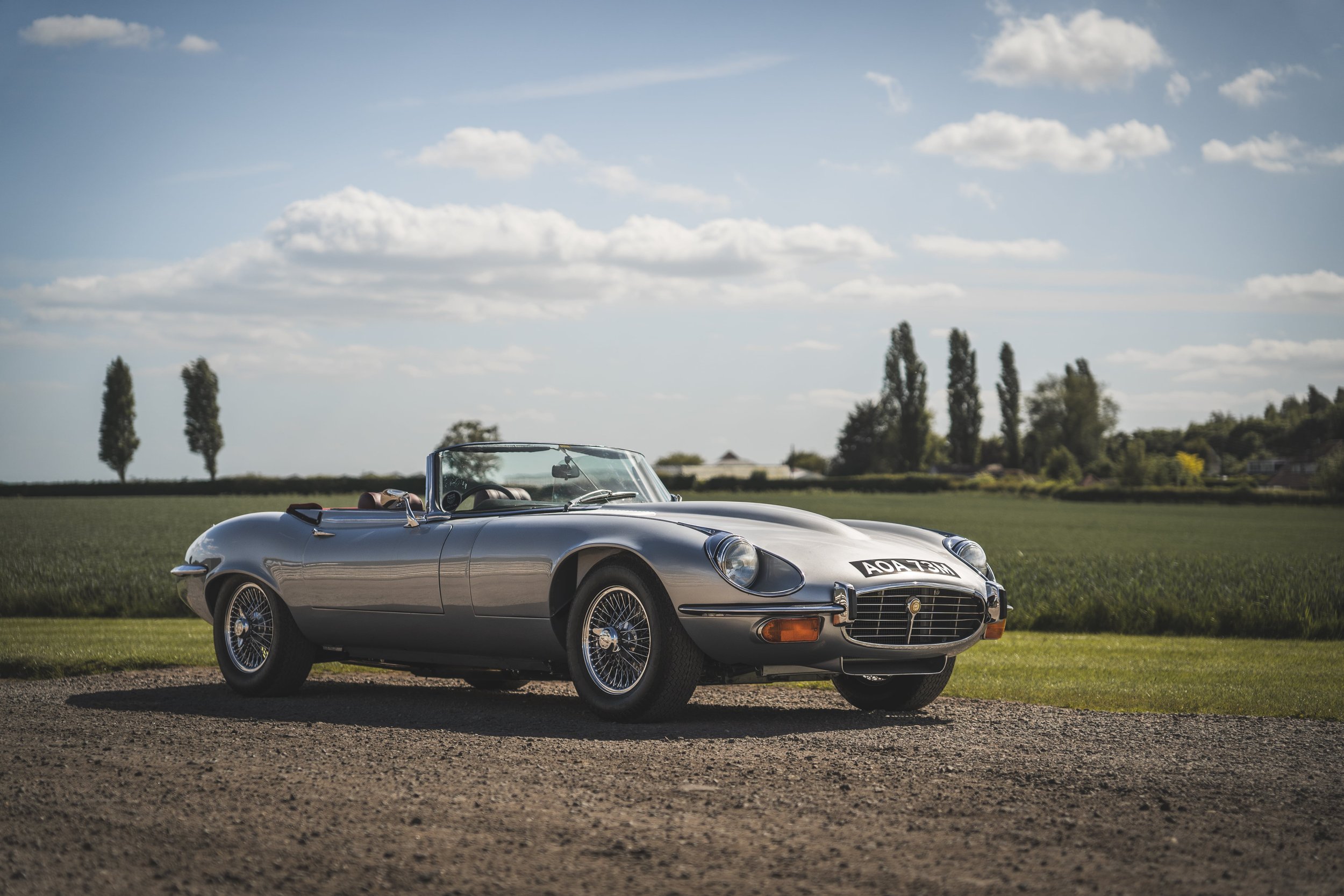Jaguar E-Type Buying Guide
Jaguar E-Type History
Jaguar began production in 1935, however, the company originally came from the Swallow Sidecar Company founded in 1922 and became the Jaguar company we know today in 1945. They released the first E-Type in 1961, unveiling it at Geneva Motor Show. In total, 72,528 Jaguar E-Types have been produced. The E-Type became one of the most recognisable and iconic sport cars of all time with its unique shape and style. Before the company stopped the Jaguar E-Type production in 1974 they released 3 series with a range of different models. The Series 1 includes such a range of developments that it can sometimes be unclear which cars belong to which category. Later model revisions of the E-Type were officially labelled "Series 2" and "Series 3," while the earlier models have since become known as "Series 1”, which includes the series 1 and 1.5.
Series 1 & 1.5
Produced between 1961 and 1968, most of the original series 1 were fitted with a 3.8 litre engine, 265bhp and reached a top speed of 150mph. Later in the series, a 4.2-liter engine was introduced for smoother performance. Initially fitted with 4-speed Moss gearbox, which was non-synchronized in first gear, later updated to a fully synchronized 4-speed in the 4.2-liter models. The early series 1 models are some of the most sought-after for their aesthetics and historical value. However, regular maintenance is crucial as a common issue with the series 1 model is overheating.
Not many changes were made to the transitional 1.5 series, the main things to note are the removal of the glass covers on the headlights and an update to the interior design. Most series 1.5 were fitted with the 4.2 litre engine.










Series 2
The series 2 was in production between 1968-1971. These E-Types have a 4.2-liter engine inline-six with about 246 horsepower and can reach a top speed of 130-135mph, slightly lower than the series 1 due to emission changes. Some noticeable changes with the series 2 E-Types are the larger uncovered headlights, a wider “mouth” grille, repositioned indicators and added taillights for safety. The overheating in the series 1 model was something Jaguar tried to address in the series 2 with improved radiator and dual cooling fans to prevent overheating. This series is a good option for buyers who want an authentic E-Type without the premium of Series 1. It is also more affordable to maintain and more reliable than the series 1 E-Types because of their overheating issues.






Series 3
In production between 1971 and 1974, the series 3 model made considerable improvements to the engine. These E-Types have a 5.3-liter V12 engine producing around 272 horsepower and reaching approximately 135mph. The series 3 offers a wider track and flared wheel arches, with a different front-end design that includes a larger grille for the larger engine. This series was only produced as a convertible and 2+2 coupé. For buyers looking for a comfortable and smooth drive, this is the series we recommend, with the V12 engine (although expensive to maintain) offers smoother, more refined power delivery. Although is less agile than the previous models with its heavier build.









Our top 3 tips
One of our top restoration technicians with 20 years in the trade gave his top tips for what to look for when purchasing your Jaguar E-Type.
1. Check for any misfiring on the test drive, making sure it has good acceleration and doesn’t produce blue smoke (oil) or steam (water) out of the exhaust.
2. Check the brakes- Make sure they are not pulling to one side and stopping effectively.
3. Check the paintwork for lumps and bumps, in particular the sills and look under the boot boards to check everything is present and hasn’t been badly repaired.
What you can expect to pay
The price for an E-Type can vary quite drastically depending on the condition and what series you’re after. The series 1 models are typically the most sort after with collectors because of the historic value. The prices can fluctuate based on demand, specific features, and originality, especially for rare models or configurations. Although fully restored models are out there to buy, they are, however, less common than the unrestored E-Types. Here is a pricing table for what you can expect to pay.
Need an expert opinion, get it professionally inspected
Acquiring a classic Jaguar is special, exciting and should be a pleasurable experience. As it's a high investment, it is very important to invest wisely and make the right decision. Our pre-purchase inspection will provide you with an independent detailed report about the condition of the vehicle, its authenticity and offer an idea of performance comparison (if possible). A pre-purchase inspection will give you peace of mind and ensure your classic car is in good condition and you are negotiating the right price. In our inspections, we will put together a report comprising of 200 photos and text discussing what’s good about the Jaguar and where there is room for improvement, along with a quotation for the items and work required.








